Breaking up is hard to endure
It's that time of year in Alaska again - Spring Breakup. While my previous post was about Spring Break this is an entirely different phenomenon...
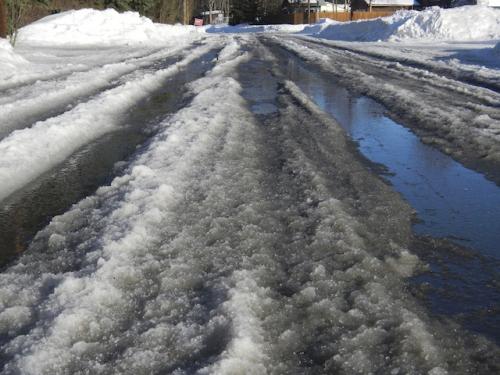
March in Anchorage, Alaska always seems to bring us one more good dose of snow and this year was no exception (12" on 3/14-15). But the third month also means sunlight and this is guaranteed every year. On this, the last day of the month, we had 13 hours and 18 minutes of daylight. But if you count the "usable" twilight time we had 14 hours and 47 minutes of visible light. And the sunlight is lengthening by nearly 6 minutes each day. Combine that influx of solar insolation with what is typically our deepest snow pack of the year and you have the main ingredients for break up.
March is not quite the stereotype that many think of when they picture Alaska around now: An unshorn, smelly old man wakes up in his flannel PJ's, yawns, scratches his lower back, and proceedes to open the cabin door for the first time since Thanksgiving only to be presented with an impenetrable wall of drifted-in snow. No, it's not quite like that.
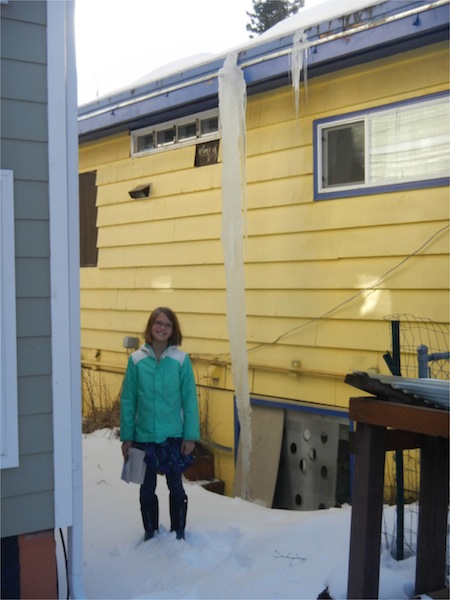
March for us goes like more this: Each morning is cold, clear and crisp, and the temperature is about 15ºF. (And it really has been almost exactly this way for two weeks now.) That temperature is not THAT cold, but it is juuussstt low enough to turn the previous day's melting slush pit of a road into a frozen labryinth of glare ice pools hemmed in by steep-walled ruts of crusted snow that are capable of swallowing most imported cars.
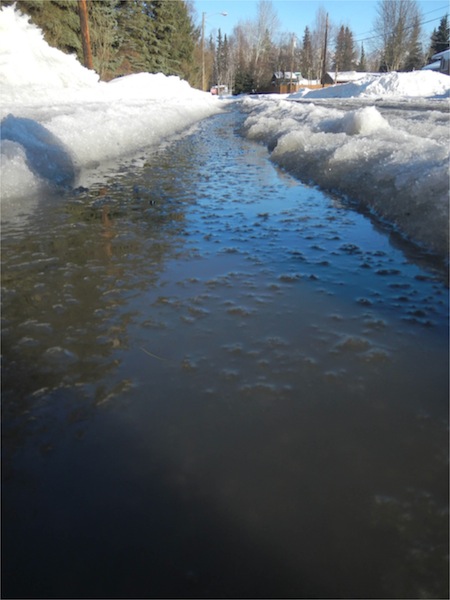
Well, until about noon or so. By then the sun is high enough (woo-hoo, 30º above the horizon!) to throw out some serious heat (it might reach 40ºF) and melt the 3-4' deep snow banks which line the roads with old snow kindly heaped there by our municipal graders. See, our snow just accumulates all winter long until March when it begins to melt and make a huge mess of everything. Spring up here isn't marked by daffodils punching through the ground, cherry blossoms, or returning species of fauna. No, this is the mud season.
Each day in March we undergo a freeze/thaw cycle that begins with treachery. Our car sits in a small divot of ice so that as you approach it you are in danger of slipping beneath it as it a giant snow antlion (look it up!) resides under our car. But just us you are about to slip under the chassis you lunge for the door handle and are saved. Backing out our driveway our car bottoms out as first the rear tires and then the front ones plunge into the well-worn frozen ruts that represent our street.
Once you arrive at your destination you leave the sanctuary of your car for an exciting trip on foot across the parking lot. Yesterday's slush has frozen into piles that make you wonder if the USGS needs to update their topographic maps just for spring break up. Somewhere under there is pavement. The crunchy, frozen stuff allows for great traction if awkward footing while the black ice allows for great footing but no traction whatsoever. The self-leveling nature of yesterday's puddle is now today's glare ice - nature's favorite way of reducing friction. It's unpredictability of it all that makes walking on this stuff a challenge. You think you're in a groove and then your take a step and your forward foot keeps going. That never ends well usually results in a big hit to your dignity as well as your elbow.
In the afternoon - at the peak of melting - Anchorage is awash in puddles that, in size, depth, and color, closely resemble glacial outwash lakes. But all that dirt was deposited not by a glacier but by the municipality in their winter-long efforts to provide us traction where there is none. And like the snow, it, too accummulates all winter long. The presence of puddles, however, give that dirt a second life - that of forming a thick protective coating on your car lest the paint be scratched. You can figure for yourself how that dirt gets from those puddles on to one's car. Suffice to say that they are unavoidable.
There is a profit in all of this, of course. The automated car-washes in town make a killing this time of year. It is entirely reasonable to pull out of your driveway in a filth-encrusted vehicle, motor over to the nearest car wash, pay for the best they have to offer (the under body wash, a third rinse, the wax - everything), drive home, and pull into your driveway with your car looking exactly the same as when you left.
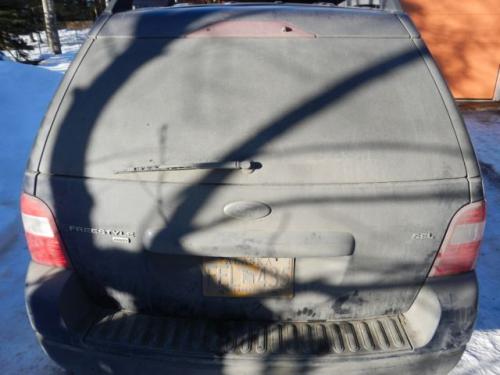
Such is the nature of March in Anchorage.
Science of the day
Since we have more sunlight nowadays I thought it'd be interesting to do an albedo study outside my school. The albedo of an object is a measure of the amount of light that reflects off that object. An ideal mirror would have an albedo of 100% (and mirrors typically do) while a dark object might have an albedo closure to 10% since it reflects so little light.
My procedure was simple. I walked outside with a light sensor connected to my computer. To record the ambient light I simply held the sensor upright pointing straight up at the sky. To record the level of reflected light off a material I pointed the sensor straight down about 15 cm above the surface, being careful that no shadows influenced my results. Here's what I found:
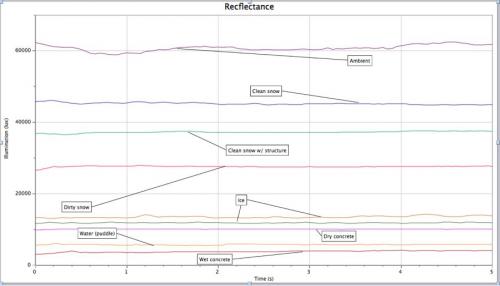
And here's a graph that presents the albedos above in terms of percent of light reflected:
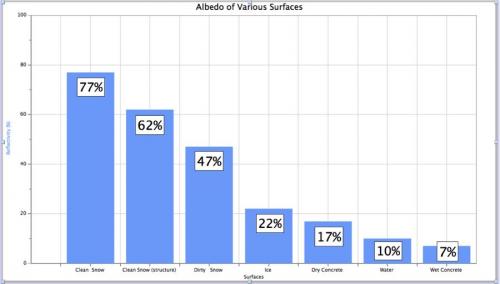
As you can see, clean snow reflected the most light while wet concrete, being somewhat dark, reflected relatively little light. Now you know why it's so easy to get sunburned while playing in the snow: you get nearly twice as much light exposure as you would playing on an asphalt playground in the same weather.
Also notice how dirty snow lowers the albedo noticeably. Polar scientists have noticed an increase in the amount of soot in the snow pack at the ends of the earth. This pollution increases the melt rate of the snow considerably, because even though the snow has a slightly lower than normal albedo to begin with, additional melting tends to concentrate the soot lowering the albedo further - a negative feedback loop.
Additionally, I was struck by how low the albedo was for ice. The ice I used wasn't very thick and it had a lot of minute air bubbles trapped in it. In other words, this was opaque ice.
Finally, the structured snow I mention in the graphs above had shown melt patterns on the surface - kind of a scalloped appearance. The subtle shaping of the surface nonetheless showed up in a lower albedo.
Off to Greenland in four days!!!


Comments